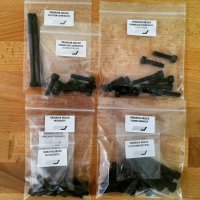no i dont but it was in the ad literature that yamaha put in the magazinesJadusMotorcycleParts said:Thanks for the ideas on the brake xb. Do you have any literature/links about that offset cam for the drum brake? And have you seen anyone do the double cam adaptation? I would be very interested to see any solutions there and would def try something myself if it looked doable for me.
specifically it was the 1980 yz250 i am almost certain now because i was racing at that time on a canam mx6-250
i broke one of the fork legs in half while competeing in the viginia city grand prix
i was never happy wiith the marzocchis anyway this was in 1983 so i went to the breakers and found the complete forks and wheel afrom the yamaha yz250 i think it was just the cam was either offse or one side a littkle longer
anyway the idea is to get more actual movement in the trailing shoe the trailing shoe is weaker the only way to make it stronger is move it more than the leading shoe
you asked about adopting a 2ls,i was going to do it with honda bike and parts but i went another course a disc
all you need to do is find an older yamha sreet bike or honda with the same diameter brake drum adopting the twin cam brake panel over will be simple some basic mahine work





